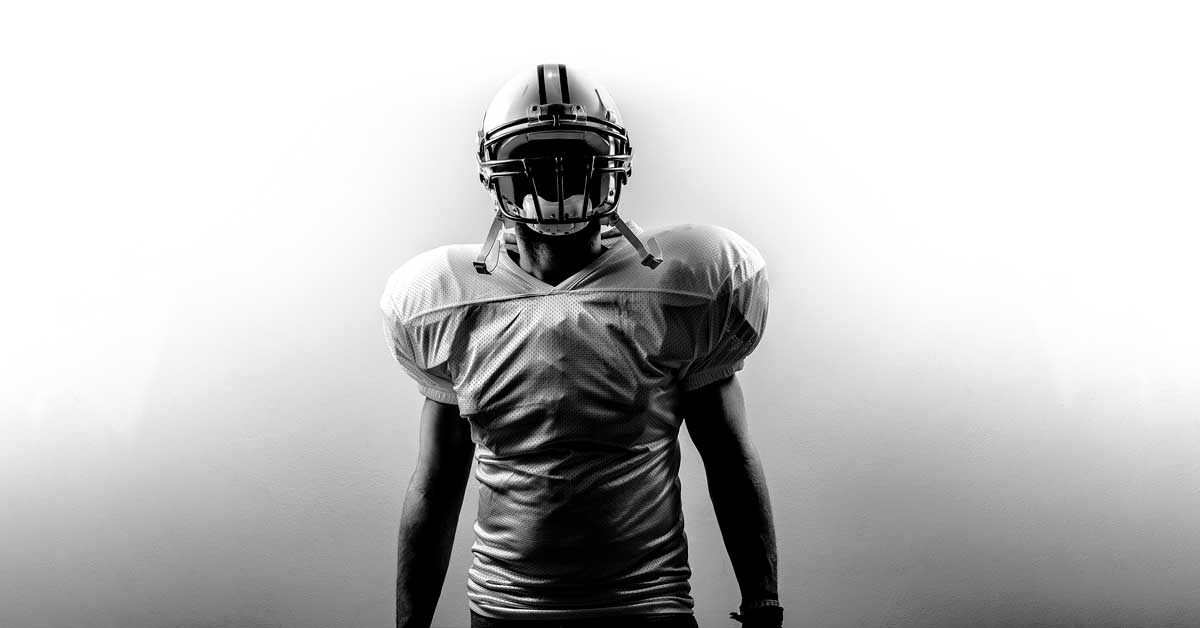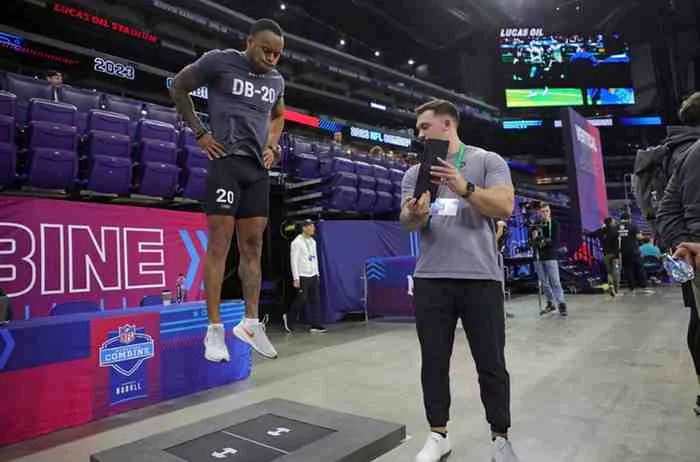What happens when, out of the blue, a top NFL athlete shows up at your door?
At first, it’s thrilling—your mind instantly races to images of fame and grandeur. Your picture could be in a blog or on YouTube, showing how you trained this NFL player to even greater success. Shortly after indulging this grand illusion, however, you realize that it could also go the wrong way.
What if the player doesn’t see any progress from the training and word gets out that you, in a word, suck? Or, worse yet, your training could lead to a costly injury. Coupled with those concerns, you start to question if he actually can get better. After all, this guy is in the NFL—shouldn’t he be at the pinnacle of his athletic ability? When all of these emotional thoughts pass, you realize it is time to do what you always do: solve the problem.
This was my situation.
How it Started (or, Why Are You Here?)
I’ve been training athletes for 30 years and have trained and worked with all levels of athletes, but there has always been a context as to why someone shows up at my door. Those reasons tend to range from direct recommendations and referrals to athletes who read my articles online to others who heard me on a podcast. With any new client, my usual process is to go through a formal assessment, which includes a video analysis looking for gait compensations and power leaks, as well as some basic data from the 1080 Sprint (including velocities and power outputs). Then, we create a plan of attack to get the athlete to their goal.
This time, it was different.
Chicago Bears wideout Thomas Ives had been working with me since his sophomore year in high school—we navigated through an issue with scoliosis and developed good numbers to get him to college, where he had a successful career at Colgate. From there, we built to a point where he put up such impressive NCAA numbers he ended up on the Bears. Thomas told me he was going to bring by a couple players who wanted to train…and next thing you know, he and two other guys walk up to my door: David Montgomery and Deshaunte Jones. David was just finishing his rookie season as the Bears’ running back, and Deshaunte had recently graduated from Iowa State, posting impressive stats as a wide receiver and hoping to land a roster spot in the NFL during the worst year to do so, thanks to COVID-19.
Formal assessment? Nope, they wanted to train, that day. I was going to have to improvise. I tried to stay within my protocol by asking the same question I ask everyone who shows up: Why are you here?
That’s an important question on many levels:
- It starts our journey together, and I can explain how I can help on that journey.
- I know what is important to them, so they feel like we are always working on what they feel is necessary.
- With high school athletes, when I require a parent present, I quickly find out if it is a parent’s will for them to be there or if they truly want to be there. (And if it is the former, I know our relationship will be a short one.)
In this case, both David and Deshaunte came right out and said they needed to be faster. Both were looking to improve their 40 times—the year before, David had dropped in the draft with a poor 40, and it was a stigma that he wasn’t very fast.
Easy enough, I figured. So, we went out, and I filmed all three in a run on my iPad using Coach’s Eye. The cue is to run from driveway to driveway, which is about 20 meters full speed. I shoot from both the side and the front. I can then show what I think could be improved and also what a good repetition looks like. I know that sprint mechanics come in all different styles, but there are certain markers that I look for.
I know that sprint mechanics come in all different styles, but there are certain markers that I look for, says @korfist. Share on X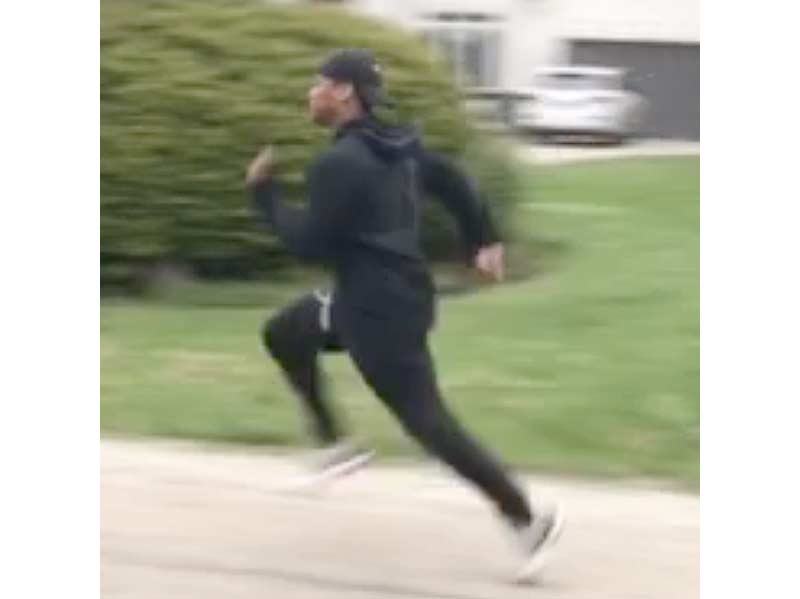
With David, here is what I saw: an excessive push from his left leg toe-off (which is the point where his foot is about to come off the ground). His push brings his knee behind his butt, and the knee completely extends. The impact of the hard push tilts his pelvis, so his knee lift is not as high—this impacts his ability to wind up, punch the ground, and get more force on the initial impact of the ground (which is called tangential force). According to Ken Clark’s research, this is the key factor to running speed.
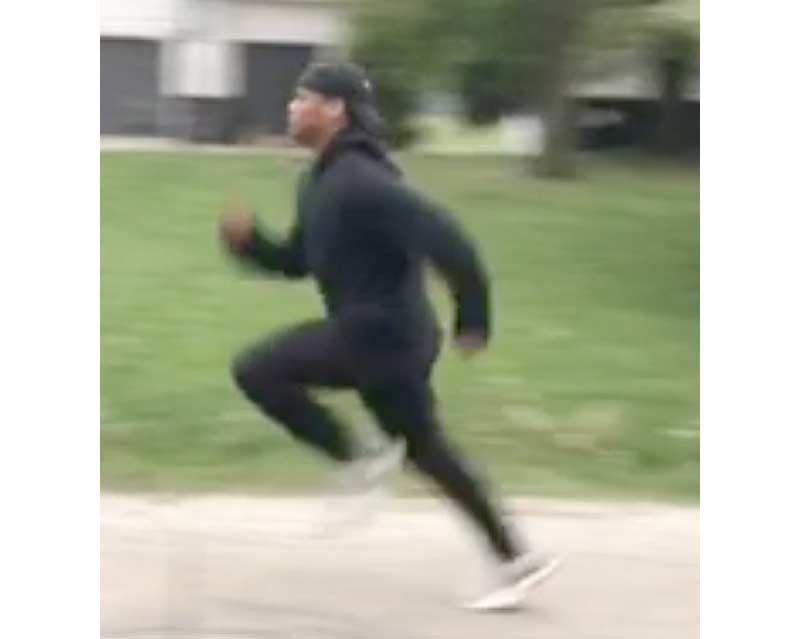
In the image above, some of David’s angles are better. But what I see is a straight leg and a low carriage of the swing leg. If we can get the foot to do more work than the knee, he will become more efficient by having more horizontal push. You can also see his torso slightly winding, which could be a compensation from a foot that doesn’t find its way through the whole process.
If we can get the foot to do more work than the knee, (the athlete) will become more efficient by having more horizontal push, says @korfist. Share on XAfter our session, I watched David’s Combine 40 on YouTube—his hip tilt was more prevalent on his runs, which can really slow an athlete’s last 15 yards.
Training on the Fly
I like to use my ankle-rocker jump and data from the 1080, which gives me a good idea of how athletes deal with slack in their system. Do they jump and snap up in the air, or is there a bunch of movement to get to a point to jump? Do they throw their body into the air with their back, or do they drive with their legs? David was pretty good at the ankle-rocker jump, so we eliminated it from the menagerie of exercises.
Most importantly, the 1080 gives me a time for the 20-meter distance we are running (and I use 20 meters because my driveway goes up a hill after that mark). I also get average and max velocity, average and max power, and average and max force. With this digital data, I can track improvements. Additionally, I can also see if one leg is doing more than the other.
David’s first run at 1 kilogram of tension in the band (so the line doesn’t have so much slack) was:
- 3.33 for 20 meters.
- Peak velocity of 8.05 m/s and average speed of 6 m/s.
- Peak power of 339 watts and an average of 192 watts.
Some of the traditional training methods like squats and power development were obsolete with David. As a high school athlete in Ohio, he was All-State in the shot, discus, and 4×100, so I knew he had power. I used my GymAware to measure bar speed metrics, and he was off the chart: In a single leg squat, he moved 300 pounds as fast as he moved 135.
In fact, I thought that if I made him stronger, it might slow him down. With his lower body power pushing as hard as it did, he may not have had the pelvic control to control his push. Sometimes, when the push is stronger than the ability to control the pelvis, this causes the pelvis to tilt—which would then push his leg farther back, and he would not have the time to bring his swing leg through and create an early contact. These factors led me to get rid of any weight room work in my plan.
On the other side of the spectrum, however, what if we made the unweighted limbs move faster? What would happen if I pulled him at supra-max speed with the 1080 Sprint? This would force him to turn over at a faster rate, and he wouldn’t have time to have a big push out back to destabilize his pelvis. And he would have to become more reactive in bringing the swing leg forward.
To accelerate this process, I started out using 1080 assistance to pull him over mini hurdles. Now, if he tried to push back he would hit a hurdle—this gave him a target, and no one likes to hit a hurdle. As I lengthened the distance, I increased the speed so the frequency would remain the same. To make it more difficult, I put thin mats in between hurdles to challenge his pattern and eventually added water bags.
He also worked out with Exogen sleeves on his calves. I do it a little different by just loading one leg: at supra-max velocity, if one leg is loaded and the other is free, it forces the unweighted limb to cycle faster. This design works really well (research on the concept will be published soon). When David’s pattern started to change, we went out to the street, and he would get towed for longer distances with the 1080.
I do it a little different by just loading one leg: at supra-max velocity, if one leg is loaded and the other is free, it forces the unweighted limb to cycle faster, says @korfist. Share on XThe drills I programmed along with his speed workouts were bent-knee prime times and the Frans Bosch single-leg runs. I use the bent-knee prime times to push the toe-off split. I use the single-leg runs to work on the leg that is in the air. To challenge the timing of the drills, we added overspeed and water bags as well.
Since we train twice a week, the other workout day was an acceleration day. This was our most competitive day because we tracked data via the 1080 for time, velocity, and power. As I said before, David has incredible power—the staff at 1080 couldn’t believe his numbers at the end of the summer.
His unweighted numbers, on the other hand, weren’t that great. The question became how can we transfer his force against weight to unresisted power? It was fun to go through different settings and see improvement, especially when we would go back down to the lowest setting on the 1080 and feel really fast. I liked making slight adjustments from a heavier to a lighter weight to see if he could keep the power that he had at the higher weight.
Just as important was assessing David’s power output in different situations. Power production in football isn’t as simple as an orange wire hanging off a comfy Spudz belt coming straight behind your hips. With some workouts, we connected the 1080 to his shoulders or his thighs to challenge his body to continue to move forward after contact was made. We also did diagonal runs, where he kept his shoulders and hips square as he ran diagonally in almost like a bounce after contact.
With some workouts, we connected the 1080 to (the athlete’s) shoulders or thighs to challenge his body to continue to move forward after contact was made, says @korfist. Share on XAdding Variety
As a change-up to the direct force, I needed to have something like a water bag-type exercise to teach his body to self-organize. Since a start with a water bag doesn’t have quite the same impact as sprinting, I borrowed from Dan Fichter/Frans Bosch and created an unstable environment by connecting two jump stretch bands to a dowel with some eye hooks. The athlete holds the bar in front of their face and the coach hangs on from behind.
When the athlete accelerates, all of their foot imperfections will push in different directions, and their torso will have to compensate. Eventually, the body learns to use its feet better, regardless of the environment. We have had some of our biggest gains after implementing this in our workouts, and athletes will either bound or single-leg bound in this fashion.
Video 1. David Montgomery performing unstable push exercise with jump stretch bands and manual resistance.
Another change-up was doing an acceleration/resisted run from a vertical position. This requires a lot from the hamstrings. Additionally, sometimes a ball carrier gets stood up after contact and will need to learn how to accelerate from that vertical position.
David, Deshaunte, and Thomas all felt that the sensation of pulling mirrored how fatigue felt in a game, so as we got closer to the season, they really increased their volume. In some cases, we executed as many as 20 heavy pulls, since David wanted to be ready for a normal game load of 20 carries.
On our last night before they left for camp, we had a marathon workout. It was a beautiful July night, with minimal traffic on my street. They wanted to see the results of 2 1/2 months of training. Quickly, the trash talking started, and everyone wanted to end the summer as King of the Street. Deshaunte took five pulls to warm up and his numbers came on strong. By the end of the night, here are the numbers David produced:
- His 20-meter time was 3.05, a decrease in time of .28.
- Max velocity was 9.1 m/s with an average of 6.57 m/s. This was an improvement of 1.1 m/s in peak velocity and .57 m/s average.
- Power output was peak 446 watts and an average of 220 watts. This was an improvement of 107 watts and 28 watts, respectively. That last number is very difficult to change.
For our year anniversary, we did a video to see the difference. I have the entire frame-by-frame analysis on trackfootballconsortium.com.
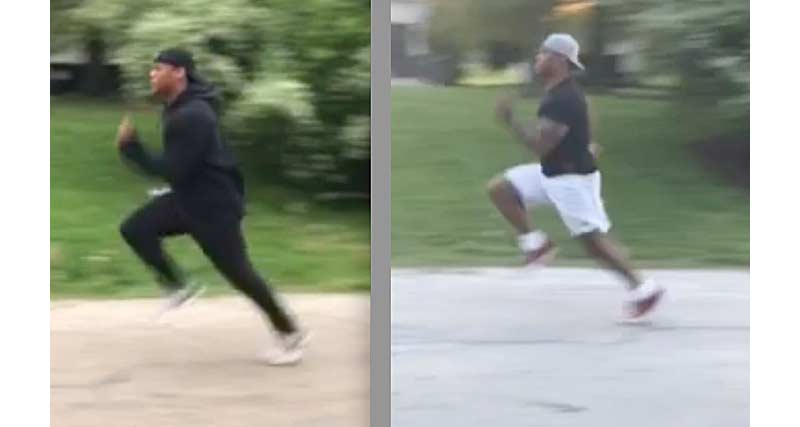
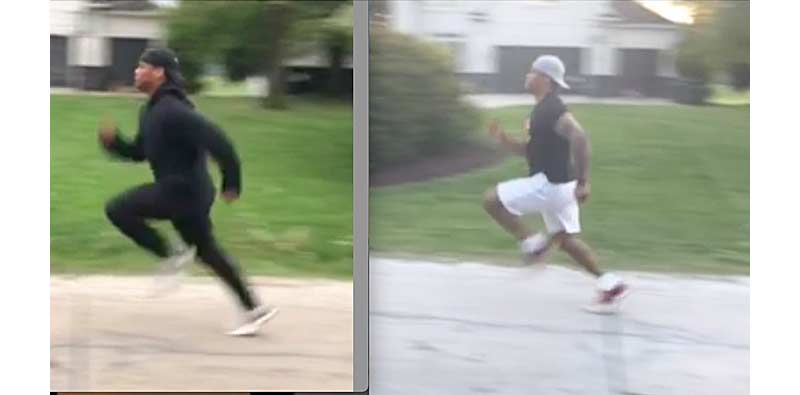
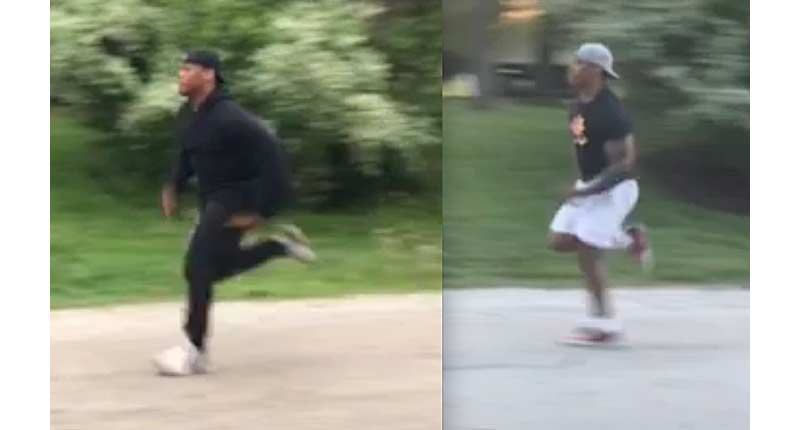
In image 5 above, on the left, David lands on the outside of his foot—which can work, but he won’t be able to produce force in the first portion of the contact (as Ken Clark often discusses). His contact will be longer, and he will need to produce force in the back half of his contact.
But I am concerned with the swing leg. It is what I call “late in the gait.” His swing leg is behind his stance leg. This creates a timing issue. His swing leg will never have the time to get the knee high enough to not land early. And, the increased knee height and limb speed will allow the leg to create greater tangential force.
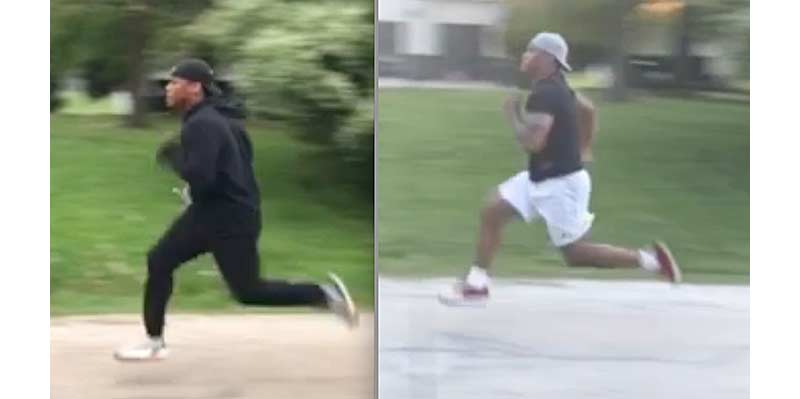
He has a slightly greater split, which will allow for greater T Force—but you can see his center of mass is much higher than before. This increased vertical force will allow for more to happen in the air, including faster limb speed.
Video 2. “Before”—David Montgomery sprinting in May 2020.
Video 3. “After”—David Montgomery sprinting in May 2021.
Since you’re here…
…we have a small favor to ask. More people are reading SimpliFaster than ever, and each week we bring you compelling content from coaches, sport scientists, and physiotherapists who are devoted to building better athletes. Please take a moment to share the articles on social media, engage the authors with questions and comments below, and link to articles when appropriate if you have a blog or participate on forums of related topics. — SF

